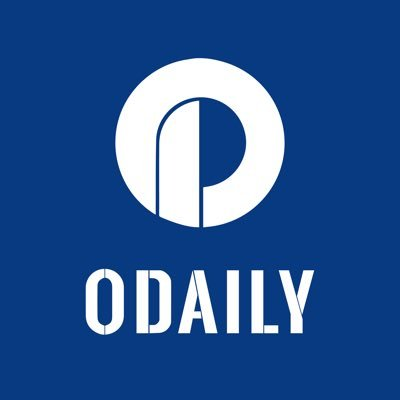Liquidity Thinking on US Stock Tokenization: How to Reconstruct On-Chain Trading Logic?
Since the end of June, the Crypto industry has set off a boom in "US stock on-chain", with Robinhood, Kraken, etc. successively launching tokenized versions of US stock and ETF trading services, and even launching highly leveraged contract products for these tokens.
From MyStonks, Backed Finance (xStocks) to Robinhood Europe, they all use the method of "real stock custody + token mapping", allowing users to trade US stock assets on-chain - theoretically, users can trade Tesla and Apple stocks at 3 a.m. with just a crypto wallet, without opening an account through a brokerage or meeting the capital threshold.
However, with the rollout of related products, news related to pins, premiums, and unanchoring has also been repeatedly reported, and the liquidity problems behind them have quickly surfaced: although users can buy these tokens, they can hardly efficiently short and hedge risks, let alone build complex trading strategies.
The tokenization of US stocks is essentially still stuck in the initial stage of "only buying up".
1. The liquidity dilemma of "U.S. stocks ≠ trading assets"
To understand the liquidity dilemma of this wave of "US stock tokenization" craze, we first need to penetrate the underlying design logic of the current "real stock custody + mapped issuance" model.
This model is currently divided into two paths, and the core difference is only whether it has issuance compliance qualifications:
-
The first is the "third-party compliant issuance + multi-platform access" model represented by Backed Finance (xStocks) and MyStonks, in which MyStonks cooperates with Fidelity to achieve 1:1 pegging of real stocks, and xStocks purchases shares through Alpaca Securities LLC and others.
-
the other is Robinhood-style licensed brokerage self-operated closed-loop, relying on its own brokerage license to complete the entire process from stock purchase to on-chain token issuance.
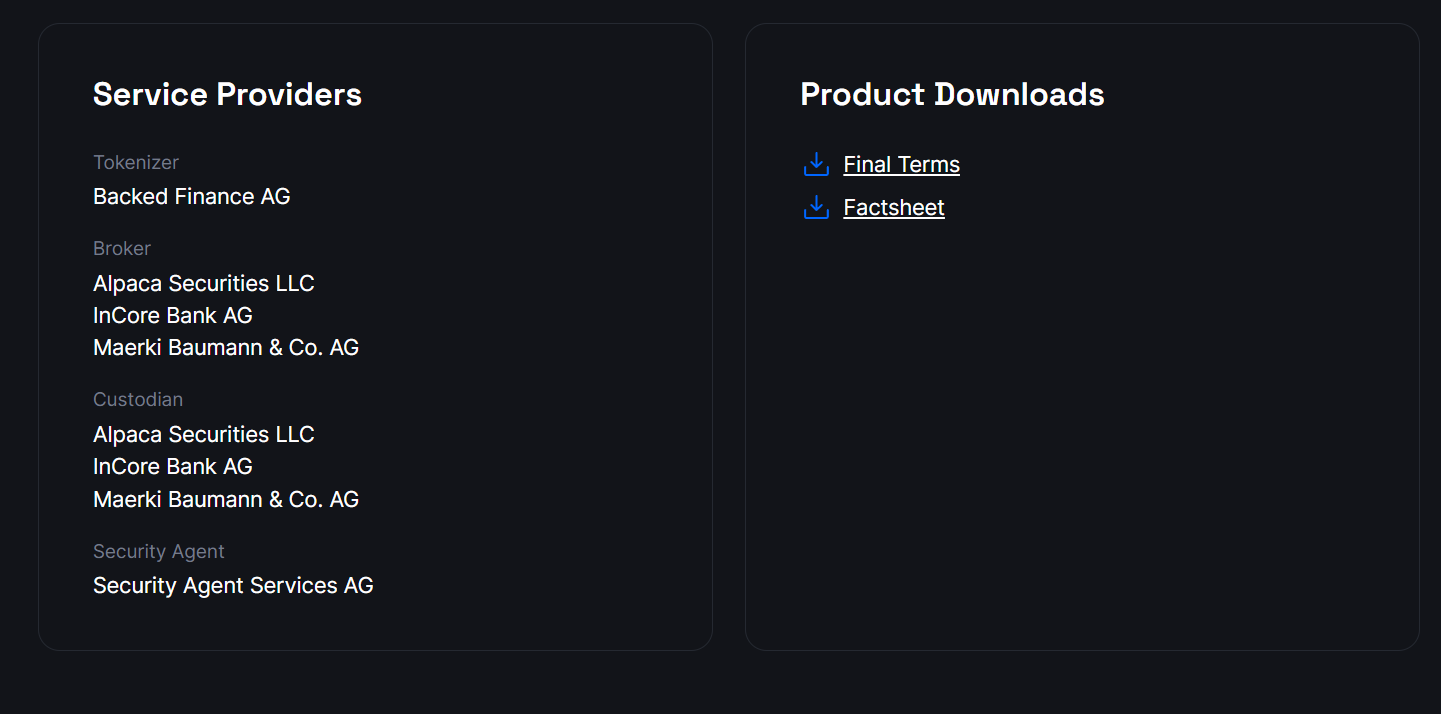
The common point of both paths is that both US stock tokens are regarded as pure spot holding assets, and all users can do is buy and hold them to rise, thus making them "sleeping assets", lacking a scalable financial function layer, and difficult to support an active on-chain trading ecosystem.
And since each token needs to be actually custodied of a stock, on-chain transactions are only the transfer of token ownership and cannot affect the spot price of US stocks, which naturally leads to the problem of "two skins" on and off the chain.
For example, on July 3, the on-chain AMZNX (Amazon stock token) was pushed up to $23,781 by a $500 buy order, which is more than 100 times the actual stock price premium.
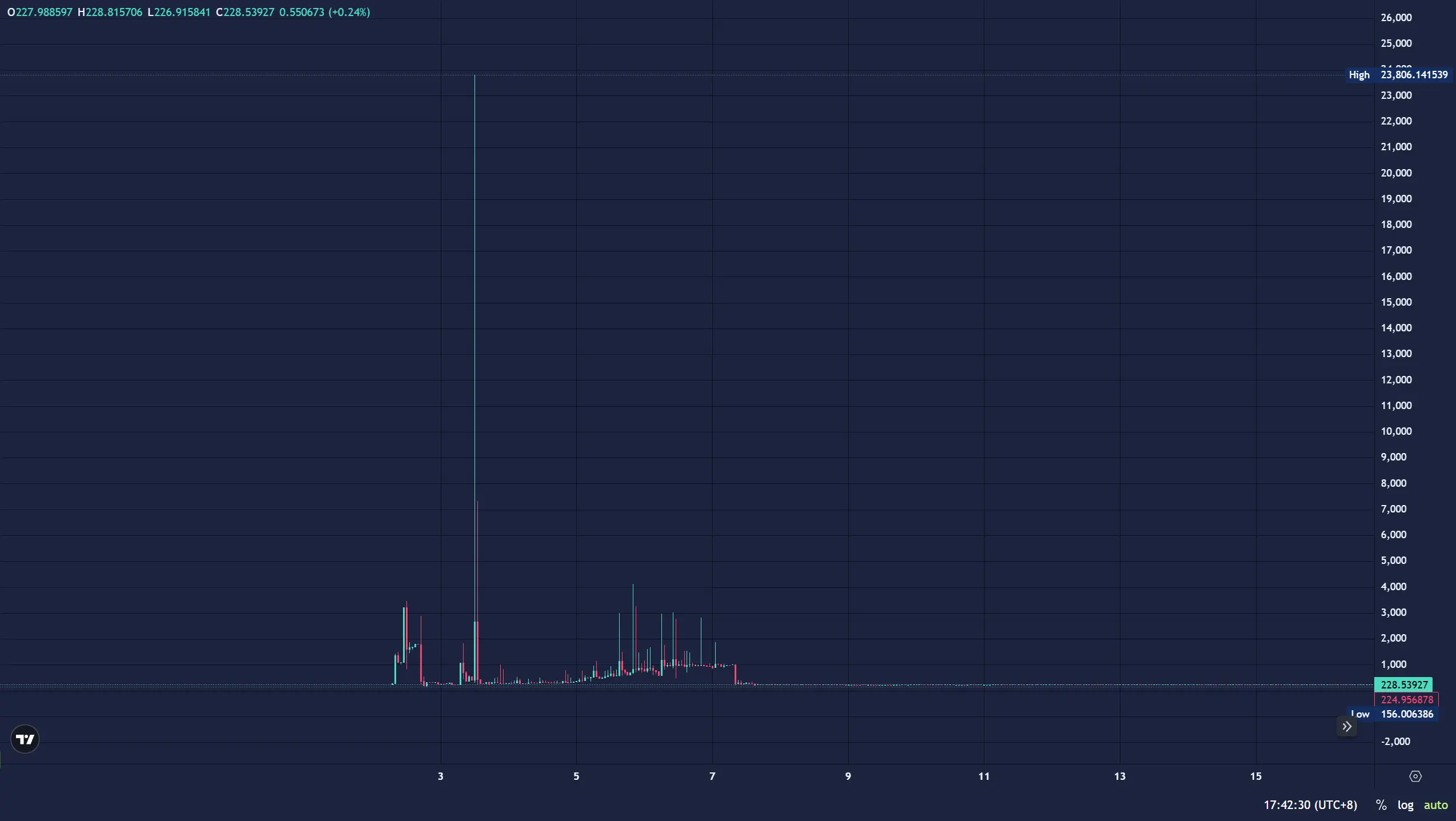
Even if some platforms (such as MyStonks) try to distribute dividends in the form of airdrops, most platforms do not open voting rights and re-pledge channels, which are essentially just "on-chain position certificates" rather than real trading assets, and there is no "guaranteed metallicity".
For example, if a user buys AAPLX, AMZNX, TSLA. M、CRCL. After M, it can neither be used as collateral for lending, nor can it be used as margin to trade other assets, and it is even more difficult to access other DeFi protocols (such as collateralized lending with US stock tokens) to further obtain liquidity, resulting in asset utilization almost zero.
Objectively speaking, in the last cycle, the failure of projects such as Mirror and Synthetix has confirmed that price mapping alone is not enough, when US stock tokens cannot be used as margin to activate the flow scenario, cannot be integrated into the trading network of the crypto ecosystem, no matter how compliant the issuance is, no matter how perfect the custody, it only provides a token shell, and the practical value is extremely limited in the context of lack of liquidity.
From this point of view, the current "tokenization of US stocks" has only achieved the price of moving the price onto the chain, and is still in the initial stage of digital certificates, and has not yet become a real "financial asset that can be traded" to release liquidity, so it is difficult to attract a wider range of professional traders and high-frequency funds.
2. Subsidy incentives, or "arbitrage channel" patching
Therefore, for tokenized US stocks, it is urgent to deepen their on-chain liquidity, provide holders with more practical application scenarios and position value, and attract more professional funds to enter the market.
In addition to the common "incentive to attract liquidity" model in Web3, the current market discussion is trying to open up the "on-chain-off-chain" arbitrage channel to improve liquidity depth by optimizing the efficiency of the arbitrage path.
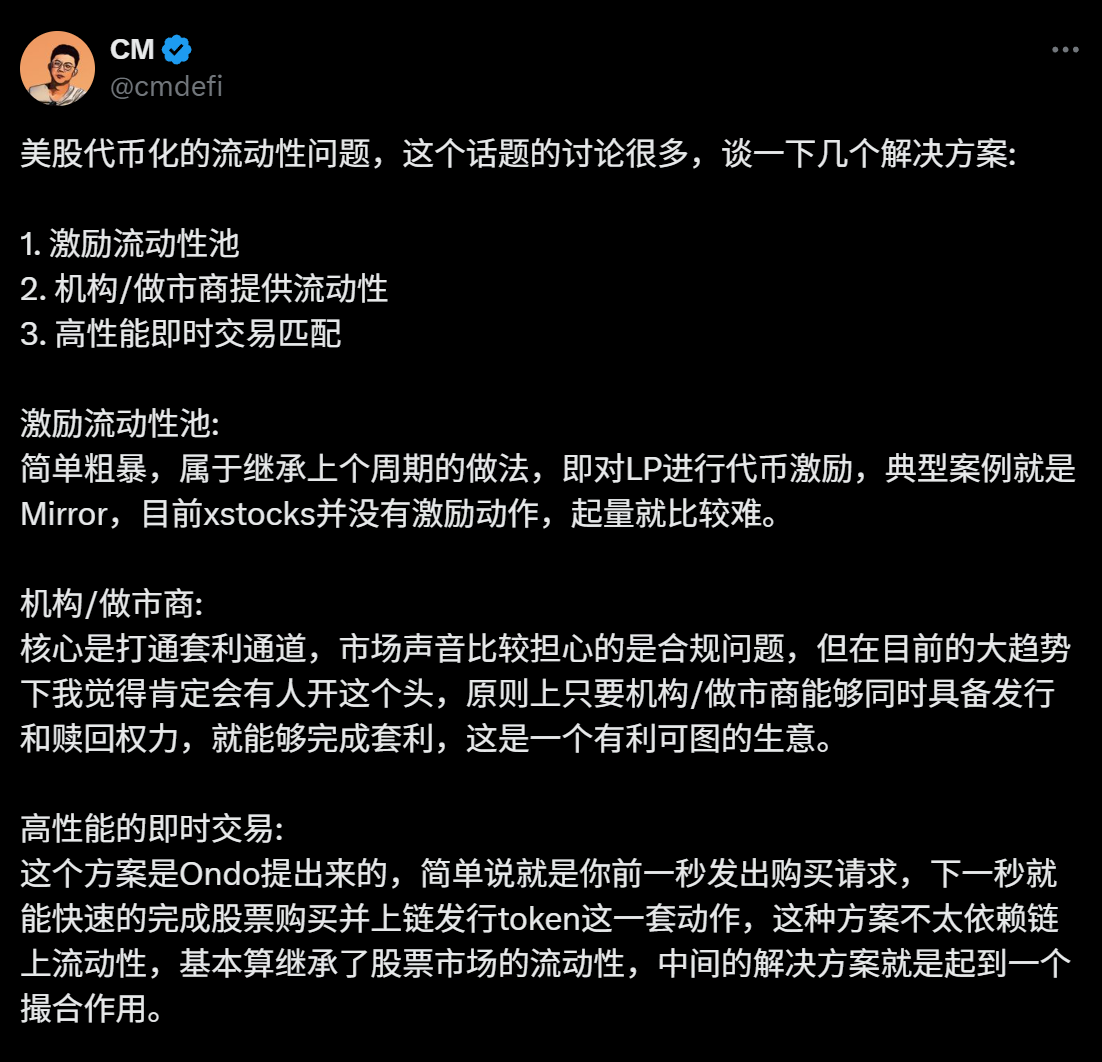
1. Incentivize liquidity pools (e.g. Mirror)
The "incentive pool model" represented by Mirror Protocol was the mainstream attempt to tokenize US stocks in the last round, and its logic was to reward users who provide liquidity to trading pairs by issuing platform tokens (such as MIR), trying to attract funds with subsidies.
However, this model has a fatal flaw, that is, the incentive relies on token inflation and cannot form a sustainable trading ecosystem, after all, the core motivation for users to participate in liquidity mining is to obtain subsidized tokens, not real trading demand.
More importantly, this model never intended to "let US stock tokens generate liquidity on their own" - the US stock tokens deposited by users are only part of the trading pair and cannot be used in other scenarios, and the assets are still sleeping.
2. Market makers dominate liquidity (e.g. Backed / xStocks)
The "market maker-led model" adopted by Backed Finance (xStocks), MyStonks, etc., attempts to open up on-chain and off-chain arbitrage through compliance channels. For example, xStocks purchases corresponding stocks through Interactive Brokers, and market makers can wipe out the price difference by "redeeming tokens→ selling shares" or "buying stocks→minting tokens" when the on-chain token price deviates from the spot price.
For example, the redemption process of Interactive Brokers requires T+N settlement, and the custodian asset transfer is often delayed.
In this model, U.S. stock tokens are always "arbitrage-targeted" rather than assets that can actively participate in trading, resulting in a low average daily trading volume for most trading pairs on xStocks, and price de-anchoring has become the norm.
This is also the core reason why AMZNX was able to have a 100-fold premium in July but no one arbitrage.
3. High-speed off-chain matching + chain mapping
The "off-chain matching + chain mapping" model explored by Ondo Finance and others is actually similar to the PFOF (Order Flow Payment Model) already adopted by Mystonks.
However, the technical and process threshold of this model is high, and the traditional US stock trading time also needs to match the 24-hour transaction attributes of 7× on the chain.
These three liquidity solutions have their own merits, but whether it is incentive pools, market makers, or off-chain matchmaking, they actually default to using external forces to "inject" liquidity, rather than allowing US stock tokens to "generate" liquidity themselves.
Is it possible to jump out of the traditional arbitrage framework of "on-chain-off-chain" and directly build a closed loop of transactions in the on-chain native environment?
3. Make US stock tokens "living assets"
In the traditional U.S. stock market, the reason for abundant liquidity is not the spot itself, but the trading depth built by the derivatives system such as options and futures - these tools support the three core mechanisms of price discovery, risk management and capital leverage.
They not only improve capital efficiency, but also create long-short games, non-linear pricing, and diversified strategies, attracting market makers, high-frequency funds, and institutions to continue to enter, ultimately forming a positive cycle of "active trading→ deeper market, → more users".
The current U.S. stock tokenization market lacks this layer, after all, TSLA. M, AMZNX and other tokens can be held but cannot be "used", neither as collateral lending, nor as margin to trade other assets, let alone build cross-market strategies.
This is very similar to ETH before DeFi Summer, when it could not be lent, guaranteed, or participate in DeFi, until protocols such as Aave gave it functions such as "collateral lending" to release hundreds of billions of liquidity.
If users can use TSLA. M shorts BTC and uses AMZNX to bet on the trend of ETH, then these deposited assets are no longer just "token shells", but margin assets that are used, and liquidity will naturally grow from these real trading needs.
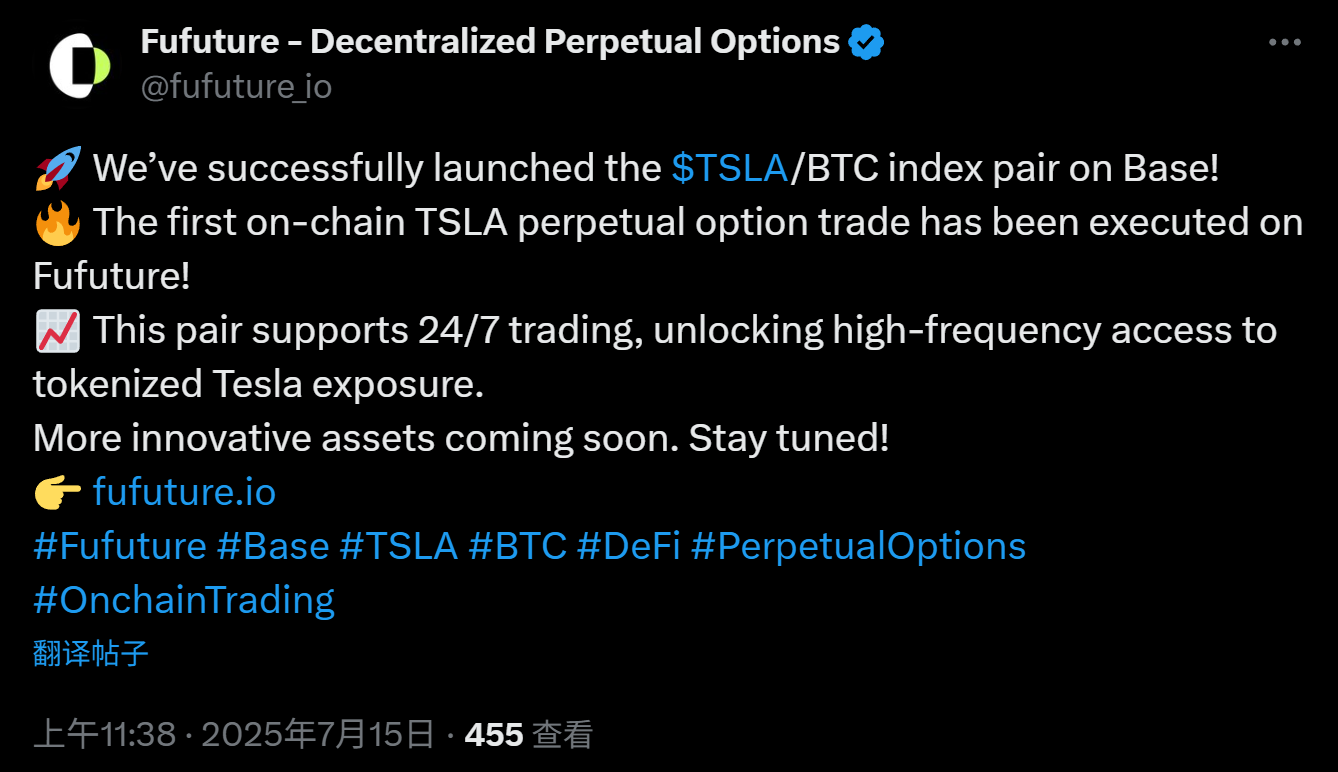
MyStonks and Fufuture jointly launched Tesla's stock token TSLA on the Base chain this month. The core mechanism of the M/BTC index trading pair is to make US stock tokens truly "margin assets that can be traded" through "coin-margined perpetual options".
For example, allowing users to use TSLA. M as margin to participate in BTC/ETH perpetual options trading, and it is reported that Fufuture also plans to expand support for more than 200 tokenized US stocks as margin assets, so users who hold small-capitalization US stock tokens can use it as margin to bet on the rise and fall of BTC/ETH in the future (such as using CRCL. M collateral to place long BTC orders), thereby injecting real trading needs into it.
Compared with the centralized contract restrictions of CEXs, on-chain options can more freely combine asset pair strategies such as "TSLA × BTC" and "NVDA × ETH".
When users can use TSLA. M、NVDA. M participates in the perpetual options strategy of BTC and ETH as margin, and trading demand will naturally attract market makers, high-frequency traders, and arbitrageurs, forming a positive cycle of "active trading→ in-depth improvement → more users".
Interestingly, Fufuture's "coin-margined perpetual option" mechanism is not only a trading structure, but also naturally has the ability to activate the value of US stock tokens, especially in the early stages of forming a deep market, and can be directly used as an over-the-counter market-making and liquidity guidance tool.
The project can integrate TSLA. M、NVDA. M and other tokenized US stocks are injected into the liquidity pool as initial seed assets, building a "main pool + insurance pool", on this basis, holders can also deposit their US stock tokens into the liquidity pool, bear part of the seller's risk and earn premiums paid by trading users, which is equivalent to building a new "coin-based value-added path".
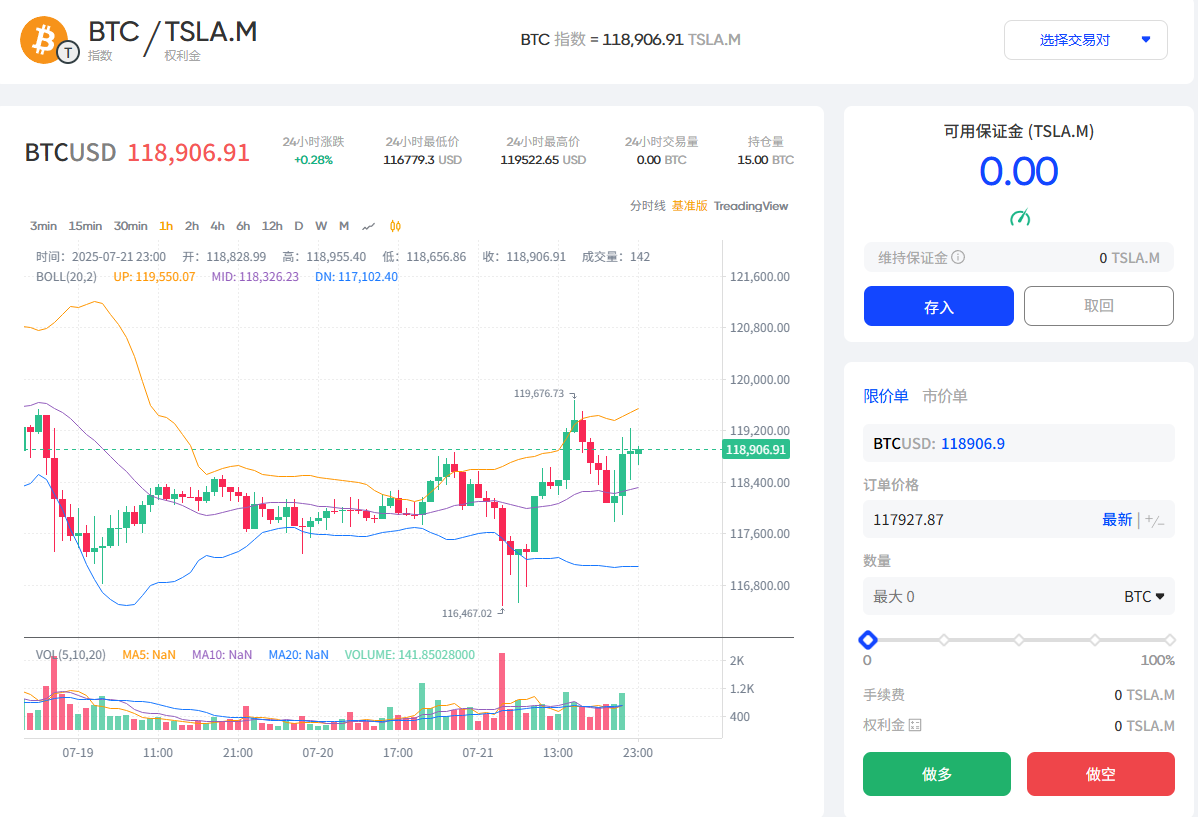
For example, let's say a user has been bullish on Tesla stock for a long time and has bought TSLA on-chain. M, in the traditional path, his choice is only:
-
continue to hold and wait for the rise;
-
or trade it out on CEX/DEX;
But now he can play more:
-
Earn premiums as a seller: Transfer TSLA. M deposits into liquidity pools and earns premium income while waiting for the rise;
-
Be a buyer to release liquidity: Put TSLA. M participates in cross-asset options trading of BTC and ETH as margin, betting on crypto market fluctuations;
-
Portfolio strategy: one part of the position is market-making, and the other part partly participates in the transaction to achieve a two-way return path and improve the efficiency of asset use;
Under this mechanism, US stock tokens are no longer isolated assets, but are truly integrated into the on-chain trading ecosystem and reused, opening up the complete path of "asset issuance → liquidity construction → derivatives trading closed loop".
Of course, different paths are still in the exploration stage, and this article only explores one of the possibilities.
Written at the end
This round of real stock custody models from MyStonks, Backed Finance (xStocks) to Robinhood Europe means that the tokenization of US stocks completely solves the initial question of "whether it can be issued".
But it also shows that the competition in the new cycle has actually come to the link of "whether it can be used" - how to form real trading demand? How to attract strategy construction and capital reuse? How to make U.S. stock assets really come alive on the chain?
This no longer depends on more brokerages entering the market, but on the improvement of the product structure on the chain - only when users can freely go long and short, build risk portfolios, and combine cross-asset positions, can "tokenized US stocks" have complete financial vitality.
Objectively speaking, the essence of liquidity is not the accumulation of funds, but demand matching, and when the chain can freely realize "hedging BTC fluctuations with TSLA options", the liquidity dilemma of US stock tokenization may be solved.
